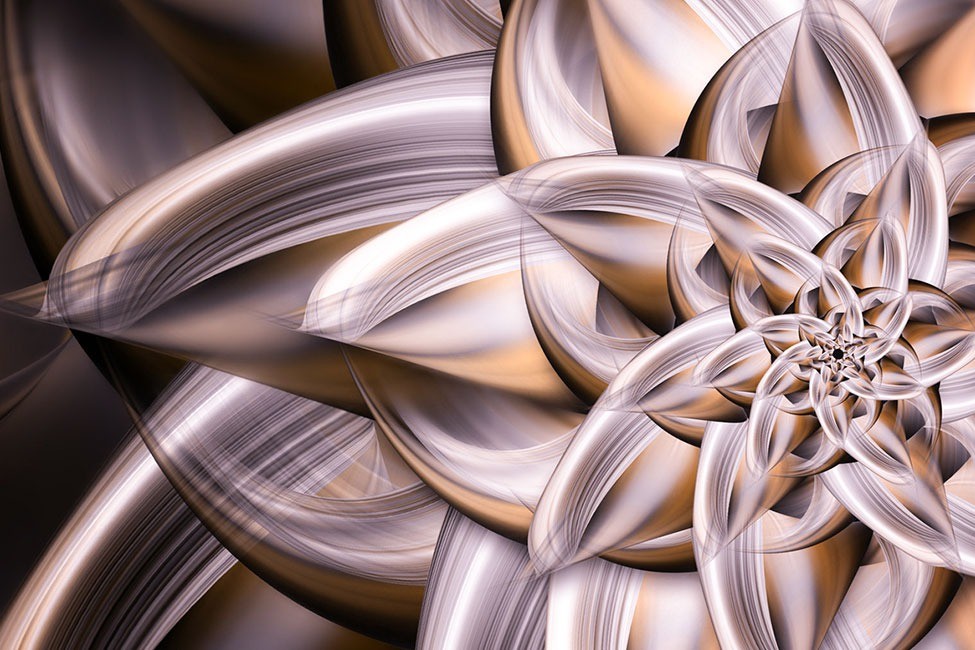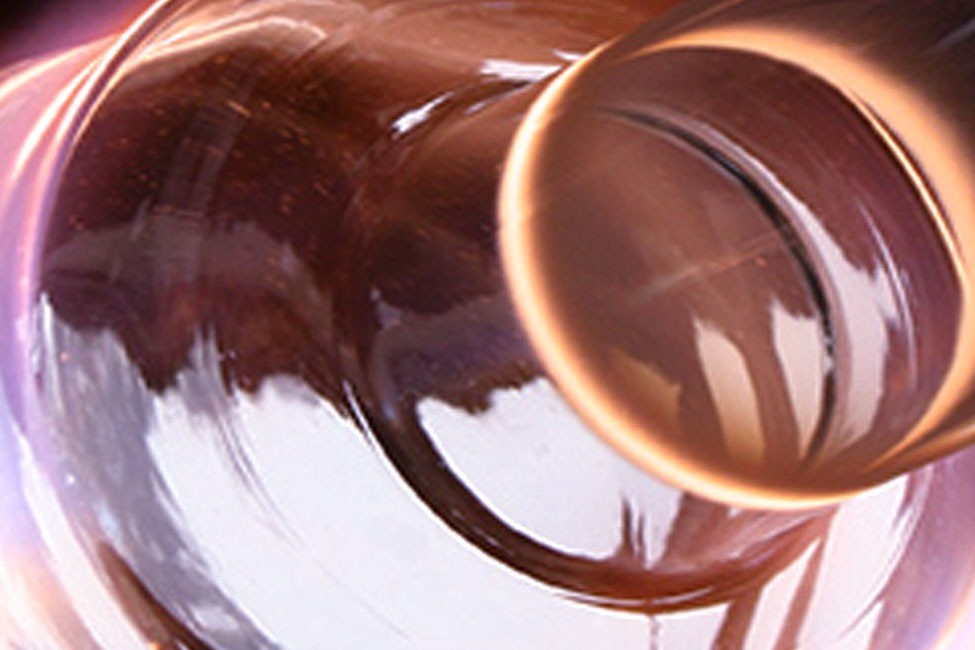You can share the article as long as you keep it in its entirety, identify the source (Cristal Vibrasons) and the author (visible under the title). Thank you.
Crystal bowls colored by nanoparticles? You may have already dreamed of it: colored crystal bowls! In fact, there are different ways to color a quartz vessel. But do you know that today, technology allows the use of nanoparticles for this?
What are the advantages ?
Each coloring method, by surface treatment or in the mass, offers a spectrum of different colors. The result varies depending on the method, with effects like transparent iridescence or darker, mirror or frosted colors.
Each of these methods has advantages and disadvantages. The major advantage of crystal bowls colored by nanoparticles is the guarantee of a color that does not deteriorate with use or over time. In addition, we obtain a spectral response which seems to be in 3D. And the palette of shades is endless!
Let's try to understand better:
What does nano mean?
In the nano universe, we are on the scale of a billionth of a meter! As you can imagine, the nanometer (nm) is used to express dimensions on the atomic scale. From the dimensional point of view, the nanoparticles are located between the so-called macroscopic matter and the atomic or molecular scale. Their size is therefore much smaller than that of a human cell.
The nanometer is also used to express the wavelengths of electromagnetic radiation, and in particular of the visible spectrum, which is between 400 and 800 nm.
What is a nanoparticle?
A nanoparticle is (ISO TS / 27687 standard) a nano-object whose three dimensions are on the nanometric scale, that is to say a particle whose nominal diameter is less than 100 nm.
To obtain a crystal bowl colored by nanoparticles, we must therefore use baths which contain these very small colored particles. And they must be fixed homogeneously! So an art is combined with this high technology.
How are the crystal bowls colored?
The base of these bowls is clear and transparent. Then, the nanoparticles will color them in a quench, thanks to transition metal ions, here silver (Ag). The objective is to make it precipitate in aggregate, in order to obtain a clear coloration. It is an ion exchange method which relies on the substitution of a quartz ion by a silver ion.
Ion exchange staining with silver calls upon a great deal of knowledge in the field of nanomaterials. This therefore involves introducing silver ions into the quartz matrix, which we will then aggregate, to form metallic nanoparticles contained in this same quartz. Hybrid technology
This technology is complex and hybrid because it borrows from classical physics as well as from quantum theories. It also uses the crystal field theory, which describes the electronic structure of transition metal complexes.
A bit of history:
When we talk about nanotechnology, we think it’s contemporary. In fact, this is not entirely accurate in the area of coloring materials.
Historically, bright colors, obtained by dispersing metallic compounds in glass, have been empirically known for centuries: glasses colored in the mass by the inclusion of metallic powders have been used since antiquity for the manufacture of works of art. then, in the Middle Ages, for that of stained glass. For example, the stained glass windows of the cathedral of Chartres (cathedral of Gothic style built at the beginning of the 13th century), used this process which consists in either including gold, silver or copper in the paste of glass or color traditional soda-lime glasses. Today, soda-lime glasses constitute colored glass bottles, perfume bottles, glazing, etc.) by ion exchange thanks to silver metal. Formerly, we already obtained colors thanks to metals, but they were melted in the mass: ruby red is obtained thanks to particles of copper or gold yellow is obtained by silver
Everything is in the play of light
Today, we “play” on the scale of the infinitely small, at the heart of the foregrounds of materials. The richness of the colors of STELLAIRE crystal bowls from Cristal Vibrasons® is related to: introduction of metal ions (transition metals) degree of oxidation of metals.
How it works ?
To explain the phenomenon, let’s say that when the metal ions receive light, they absorb part of the energy transported by the light photons, causing an excitation of the electrons of their surface layers. These electrons then evolve from their state of fundamental energy, towards higher energy levels. Depending on the differences between the energy levels, the ion will absorb a certain frequency of the received light, then re-emit the complementary color. So as many energy differences as possible, as many colors as possible!
Inalienable colors:
If they are unalterable, it is the fact of their manufacture! Indeed, once the silver introduced into the matrix of the crystal bowl, the latter will undergo a treatment in a aqua regia bath (mixture of concentrated hydrochloric acid and concentrated nitric acid, to dissolve the so-called noble metals) . Then, the metal will be distributed homogeneously in the mixture during the next heating. This heating allows the silver atoms to still move slightly in the quartz. When they meet, they will cling to each other: this is the stage of crystal growth leading, little by little, to the formation of aggregates of several hundred, even a few thousand metallic atoms !
How do you get such precise color “mixes”?
In fact, the size of the metal aggregates will influence the color. Let’s take a closer look at their optical structures and properties.
Here, we no longer have an atomic absorption of light (absorption by metal atoms or metal ions), but a very particular optical absorption by whole aggregates.
This is based on two competing phenomena:
- it is metal, even on the infinitely small scale: therefore, it absorbs light by inter-bands (between the band called valence and the band called conduction). This generally occurs at fairly distant wavelengths, towards the ultraviolet (between 10 and 400 nanometers).
- these are very small aggregates: therefore, the number of atoms on the surface is important compared to the number of atoms inside. This has the consequence that the atoms on the surface form with their free electrons a kind of gas, capable of entering into resonance with any magnetic radiation, in this case light, and of producing what is called a “plasmon resonance” .
What is a plasmon?
A plasmon is an oscillation of quantified plasma. We also speak of plasma oscillation quantum. Thus, it is about a quasi-particle which results from the quantization of plasma frequency (just like the photon and the phonon are quantifications of vibrations respectively luminous and mechanical).
To put it simply, the electrons start to vibrate together, which allows them to absorb light at a very specific wavelength. This wavelength, associated with inter-band absorption, leads to the shades observed in the STELLAIRE collection of Cristal Vibrasons® or in the bowls of the custom-made online application, to create your own singing crystal bowl !
If the light is not decomposed, it is monochromatic: it corresponds to radiation.
If the light is broken down, it will be polychromatic.
Thus, the Stellar collection offers crystal bowls with one color and others with different colors. These magnificent colors are possible thanks to the collaboration of chemists and physicists. This alliance, which has made it possible to understand and master the structure of materials on a nanometric scale, has already revolutionized the glass industry, for example.
Today, this breakthrough breaks through to quartz quartz crucibles and transforms these manufacturers into an industry where high technology and craftsmanship is combined. Innovative and inspiring technology, at the service of creativity and people …
See you soon, the Crystallins
In the same category
All you need to know about crystal bowls
14 April 2020
How sounds act on living molecules?
A small article to inspire you! Excerpt from the online school of Cristal Vibrasons. You’ll learn about the impact of sound on protein and the world…
All you need to know about crystal bowls
14 April 2020
The pleasure of playing a crystal bowl
An article on the immense pleasure one feels in playing a crystal bowl or how to put oneself at the service of one's own joy!
All you need to know about crystal bowls
14 April 2020
The origin of crystal singing bowls
A detailed article to better understand the stages of making crystal bowls from the different Crystal Vibrasons Collections.



